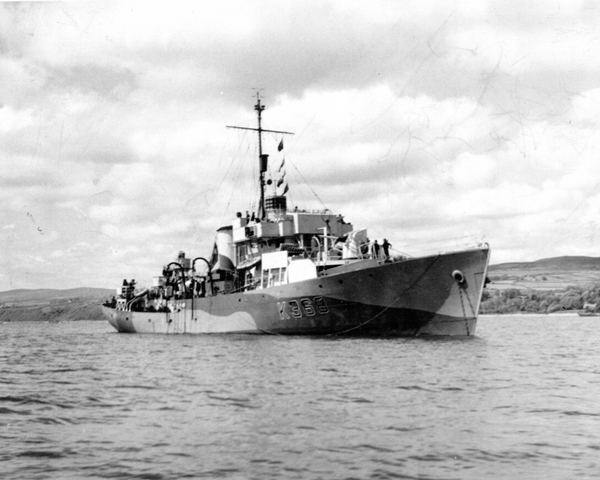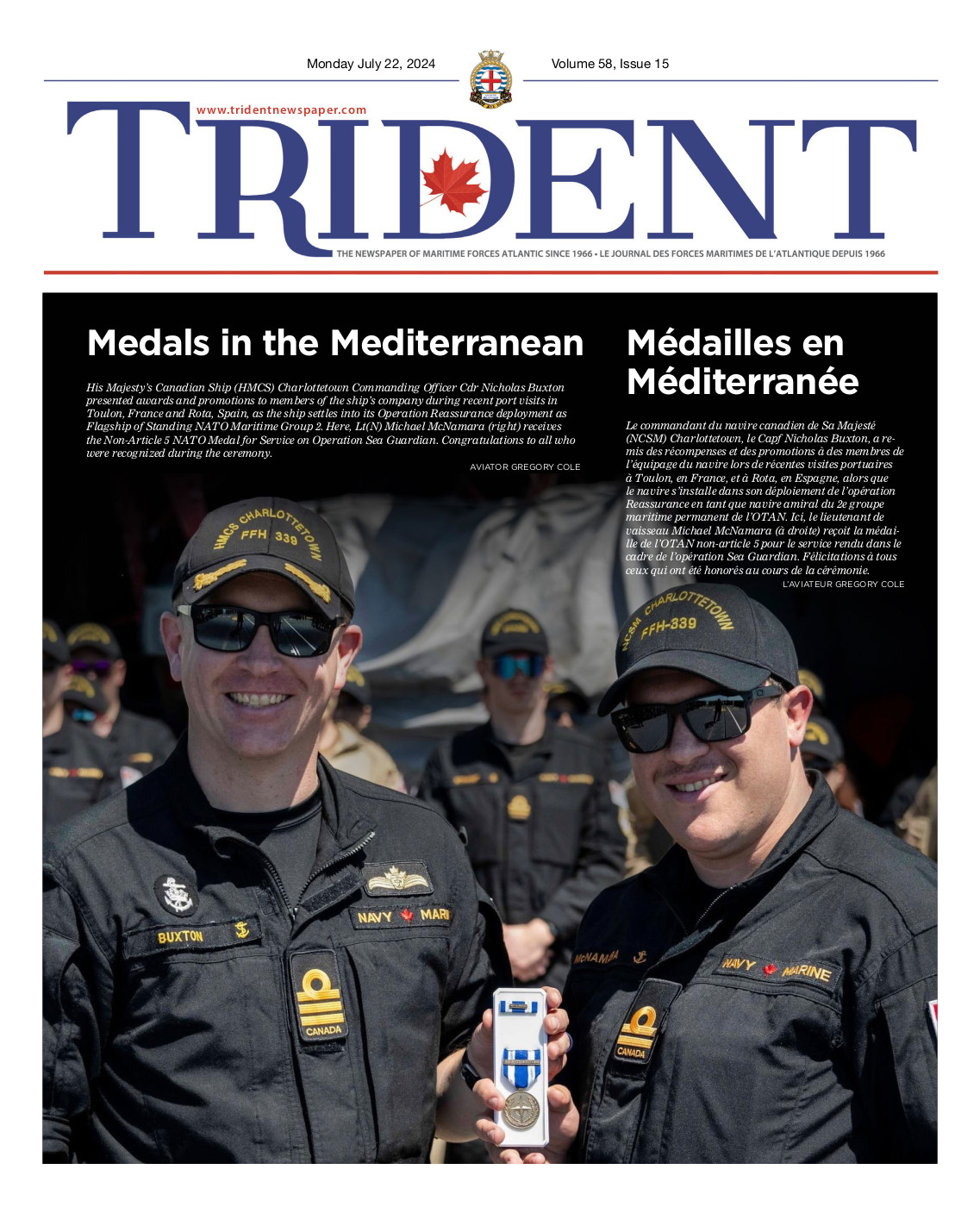
COURTESY OF ROGER LITWILLER
The last corvette lost in the Battle of the Atlantic
Par Ryan Melanson,
L’équipe du Trident
When naval historian and author Roger Litwiller began researching for his first book, with a plan to highlight RCN ships named after communities along Ontario’s Bay of Quinte, he found that most accounts of the Battle of the Atlantic had little mention of HMCS Trentonian.
It was usually noted the ship was built with a longer focsle than other flower-class Corvettes, that it was involved in D-Day operations, and that it was torpedoed and sunk on February 22, 1945 off of Falmouth, England, with six sailors being lost.
“That’s usually about it. Most books basically have three paragraphs on Trentonian,” Litwiller said.
He published his book Warships of the Bay of Quinte in 2011, focusing on Trentonian, along with HMC ships Belleville, Hallowell, Napanee, and the two Minesweepers named Quinte. Afterwards, he returned to Trentonian, uncovering more stories, letters and other artifacts, and focused entirely on the ship for his second book, White Ensign Flying, published in 2014.
Litwiller will give a presentation on Trentonian in Halifax on May 4, largely based on his book, at the Maritime Museum of the Atlantic, as part of the annual Battle of the Atlantic commemorations.
One of the key hooks for publishing the book, he said, was the ship’s status as the last Corvette to be lost in action during the Battle of the Atlantic. HMS Bluebell, sunk on February 17, 1945, just days earlier, had sometimes been identified as the last British corvette to be lost.
“But Trentonian was the last of any country. This is the largest class of warship ever built, and one of the few classes that was used by both sides,” he said, referencing German use of captured French corvettes during the war.
“That makes this an internationally significant story, which is something I was able to pick up on and pitch towards the publisher. This isn’t just local history.”
Along with the story of the sinking, other highlights from Litwiller’s talk will include Trentonian’s role on D-Day, described in letters from the CO to the namesake town, as well as the multiple friendly fire incidents the ship was involved in through its time in service. His well-researched facts and timelines are accompanied by a number of anecdotes and personal photos gathered from visits and interviews with veterans who sailed in the ship.
Litwiller is a former Naval Reservist and Sea Cadet CIC who also works as a paramedic in Eastern Ontario, and said his upcoming retirement will allow time to focus on his next naval research projects.
The presentation White Ensign Flying: The Battle of the Atlantic and the loss of HMCS Trentonian with Roger Litwiller starts at 2 p.m. on May 4 inside the Maritime Museum’s second-floor warehouse theatre. For more information on Litwiller’s research, books and photo collections, visit http://rogerlitwiller.com.





